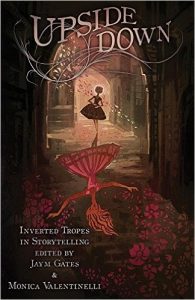 If you recall, you might remember that I’m part of the RPG Creator Relief Fund. I’ve got great news! This year, we achieved 501(3) status and this will help the charity grow in the future to help other creators in dire need. Plus, if you’re looking for charities to donate to, your contributions are tax deductible.
If you recall, you might remember that I’m part of the RPG Creator Relief Fund. I’ve got great news! This year, we achieved 501(3) status and this will help the charity grow in the future to help other creators in dire need. Plus, if you’re looking for charities to donate to, your contributions are tax deductible.
Today, I’d like to share a statement from Sean Patrick Fannon, our Communications Director.
RPG Creator Relief Fund Entering 2017
Greetings to all of you who love RPGs and the folks who make them! There’s no arguing that 2016, while a fantastic year in terms of RPG releases and the immense creativity behind them, was a bit rough on a lot of folks who make this their vocation. Injuries, illnesses, and serious financial setbacks hit a lot of great folks, and still others are facing major challenges in the days, weeks, and months to come.
This is exactly why we created the Roleplaying Game Creators Relief Fund. Inspired by such great efforts as the Hero Initiative, we wanted to put together a way to help RPG writers, artists, editors, and other creative folks who work professionally in this field to gain help through tough times. As a 501(c)(3) nonprofit charitable organization, we need as much help as RPG fans can give us in order to fill the Fund with assets that can be called on when needed.
We experienced a lot of success this year, but we plan to do much more in 2017 and beyond. We’ll be creating more great bundles for you to purchase, with the proceeds going to the Fund. As well, we’ve got some special, exclusive projects in the works, designed specifically for the RCRF to generate much-needed money to give those in need.
We’re also exploring charity drive initiatives, such as auctions at conventions; live-cast gaming feeds; gaming group challenges; and other creative and energetic concepts to motivate the RPG community to help those who make the games and worlds we all love.
We’d love to know what gamers would like to see, as well, so please reach out to us and let us know. You can find us online at our website, or on Facebook. If you want to look at the bundles we have available at any given time, check out our DriveThruRPG page.
To all who’ve supported us so far, we thank you most profoundly, and we hope you’ll help us spread the word and get more gamers involved. We all know important it is to team up to fight the darkness and help our fellow adventurers heal and survive when times are bad.
For the RCRF Board of Directors, Board of Applicants, and Advisory Board,
Sean Patrick Fannon
Communications Director, RCRF




